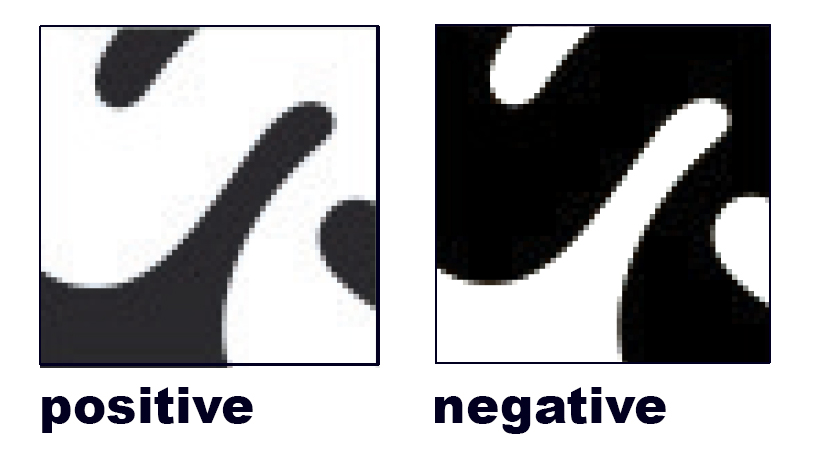Due: 11:00, Monday
goal: refine your composition
To Do
-
- refine your letter
- comment
- choose
- watch
1 Finalize: your letterform
-
- Refine or create 2 letterforms
Criteria
-
-
-
-
-
- square format?
- does the design use shape or line?
- does it have an equal amount of black and white?
- does it demonstrate a figure-ground principle? (does the eye shift back and forth between
-
-
-
-
2. Once completed, create a negative version of each.
A negative version is exactly the same except that it uses the opposite color.
-
-
-
-
-
- What was black will be white, what was white will be black.
- The positive and negative versions MUST be exactly alike except it reverses color
- One way to do this is to “invert” your letterform in photoshop
- Select object > Image > Invert
-
-
-
-

3. Post all four to a new frame in Miro
Be sure that your frame works with our system
Our system
-
-
-
-
-
- 3 frames per row
- align all frames
-
-
-
-
2 comment: on 2 different student’s posts
Comment using the assignment criteria, see above, and the figure/ground relationship.
-
-
- Give your assessment in terms of what is working or is not clear.
- Use descriptive language; balance, weight, line, form, etc. Words like nice and good don’t explain much.
- Be direct: too much white? too much black? Explain why.
-
3 choose: an object
In our next project, we will create an icon from an object that you can hold in your hands
-
- Choose 3 objects that have distinct identifiable qualities that define them.
Choose an object that everyone in the class is familiar with. to make your icon identifiable
For example, if your object is in the shape of a square without any discernable marks, your icon may be interpreted as a square and not your object
Our icon will work be black and white. do not use color as an identifying mark
2. Bring 3 objects to class on Monday.
4 watch: how do we see
How to affect what we see.
-
- Watch: How optical illusions trick your brain (5 minutes)
https://www.ted.com/talks/nathan_s_jacobs_how_optical_illusions_trick_your_brain
2. Add a comment to the Openlab chat
What is the brain’s function in vision?




We use our eyes to take in information into our brain. The brain process the information by asking many questions to engage it creating a unified mental model.
The brain creates or already knows what something is through context visual cues. When there is contrast like in most illusions it causes the back and forth eye play.
The brain focuses on certain things more than others because it’s busy taking the information to let us see something that we understand.
The brains function when it comes to vision is that our eyes are capturing visual information and sending it to specific nerves within our brain. With the ability for our brain to do such a thing, it translates the images and allows us to process exactly what we are seeing.
Our brain creates a perception based off interpretation of what we take in through our eyes. Optical illusions simply trick our brains into seeing things which may or may not be real. Because of color, light, or pattern our eyes see, the brain may take it as a moving image.
The brain’s function in the case of vision is that the moment light hits your retina, the process of sight begins and then information is sent from your retina through electrical signals via the optic nerve to your brain which processes an image that allows you too see. Without the information through electrical signals we wouldnt be able to see.
our brain have to deal with a lot of information in a short time, so they sometimes using assumptions about visual information to create an edited version of the world
Our brain makes assumptions to make sense of what our eyes see to translate the information into something we can understand.
The brain is always busy, leading it to use only a certain amount of cognitive energy to see the thing you want to focus on. Then it uses assumptions wit visual information to make the image we see in our brain.